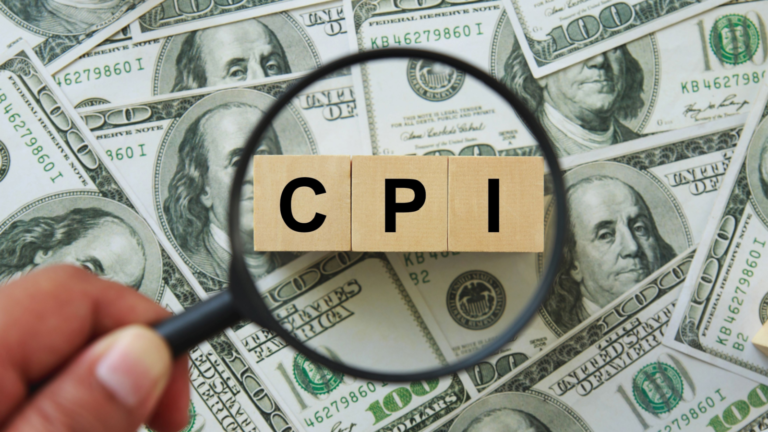This morning, the market’s most-anticipated inflation report – the consumer price index report (CPI) – was released. And it seems investors are having trouble figuring out if this latest batch of inflation data is good or bad for stocks.
At first, Wall Street cheered the July CPI data because the headline inflation rate of 3.2% was lower than the estimated 3.3% rise. And as a result, the S&P 500 popped nearly 1.5% in early morning trading.
But as the day continued on, traders began to have second thoughts. Investors were seemingly concerned that in July, inflation accelerated from its 3% rate in June. And by the afternoon, the S&P 500 dropped to a gain of just 0.2%.
So… Was today’s inflation data good or bad for stocks?
Well, in our opinion, it was emphatically positive.
July CPI Breakdown
It’s true that July’s headline CPI rate accelerated from 3% to 3.2%. However, this reacceleration is due exclusively to the rise in energy prices. And that is pretty unimportant for three reasons:
- Energy prices are volatile, and the Fed can’t control them, so energy-driven inflation shouldn’t impact Fed policy. Their volatility also means they could plummet just as fast as they’ve risen.
- Energy is a small component of CPI, accounting for less than 10% of the total CPI basket.
- Everything else that comprised July CPI continues to disinflate. Food CPI dropped from 5.7% to 4.9%. Core commodity CPI fell from 1.3% to 0.8%. Shelter CPI slid, too.
In other words, the supposed reacceleration of CPI in July was driven exclusively by volatile energy prices, which themselves are a small part of CPI.
That’s why core CPI trends – which is what the Fed cares about most – continued to slow in the quarter. Core CPI dropped to 4.7%. Furthermore, on a three-month annualized basis, core CPI rose just 3.1%, its lowest rise in this cycle.
Perhaps the most important part of July’s CPI report, though, came on the shelter line. Shelter costs make up the largest part of the CPI basket, accounting for a whopping 35%. No other line item carries a bigger weight.
And shelter CPI has been very high and very sticky. While headline inflation peaked a year ago, shelter CPI peaked just a few months ago.
But now it’s finally coming down. And new modeling from the San Francisco Fed (based on real-time asking rents across the U.S.) suggests that shelter CPI will collapse over the next 12 months. Specifically, the San Francisco Fed sees shelter CPI dropping from 7.7% today to below zero by the middle of 2024.
If 35% of the CPI basket is set to collapse over the next 12 months, then it doesn’t really matter what energy prices (less than 10% of CPI) do. Overall inflation will head lower.
So, forget the bears and naysayers. Today’s CPI report was not bad. It was good. And it provides a great setup to propel the 2023 stock market rally forward.
The Final Word
It’s true that the seemingly unstoppable bull market rally has hit quite the speed bump this month. But that doesn’t mean it’s over.
Red-hot stocks got overextended and needed to consolidate and digest their gains. That’s exactly what we’re seeing right now.
Of course, it’s true that this pullback is lasting longer and is more intense than we anticipated. We were hoping that today’s softer-than-expected CPI data would reignite that rally. And while it did at first, stocks gave up their gains as the day went on. But that’s no reason to be bearish.
We’re confident that the most important takeaway from today’s CPI data is this: Disinflation remains the prevailing trend. And that will propel stocks much higher in the long term.
Want to prepare for those bull market gains? How about investing in AI, one of the market’s top-performing sectors of 2023?
After all, this whole bull market rally began after OpenAI launched ChatGPT back in November of 2022 and kickstarted the AI Revolution.
And just last week, it announced huge partnerships to power AI programs at both Intuit (INTU) and Moody’s (MCO).
In fact, I truly believe OpenAI could be one of the world’s largest companies in the near future – if not the largest.
But OpenAI is a private company; it’s not a stock you can buy on a major exchange like most others.
Though, I’ve discovered an investment ‘loophole’ that will allow you to take a stake in this industry titan – before its highly anticipated IPO.
Like investing in Apple (AAPL) in the 1980s or Amazon (AMZN) in the 1990s, this is an opportunity you can’t afford to miss.
Learn more about this loophole now.
On the date of publication, Luke Lango did not have (either directly or indirectly) any positions in the securities mentioned in this article.


